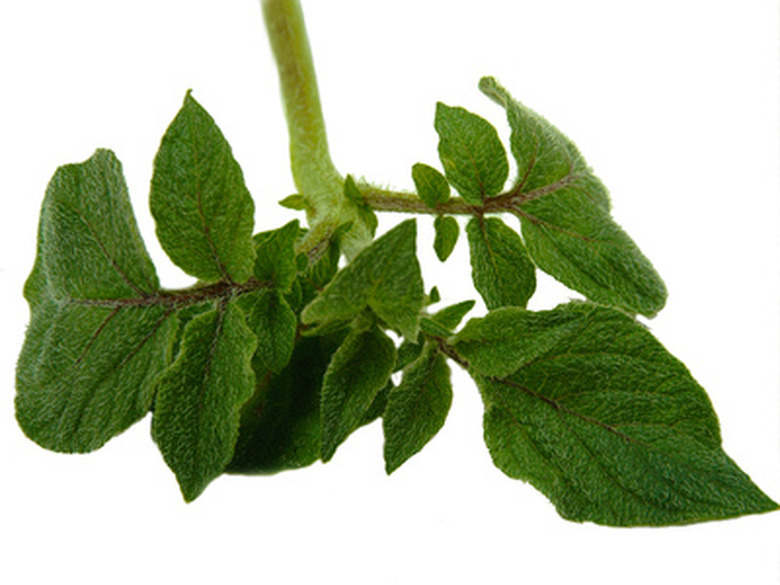Why Do Potato Plants Yellow & Wither?
Potato plants add a touch of mystery to a vegetable garden. One watches, waters and wonders about what is actually occurring underground. Only when plants have definitely died does a gardener get to dig for uncounted treasure. In this case, yellowed and withered plants are signs of success. The only caution with potatoes is early onset of yellowing leaves and withering. As members of the nightshade family, potatoes are susceptible to all the diseases that plague tomatoes and that are characterized by early yellowing and withering. Keep your potatoes healthy during the growing season and wait for plants to signal your success.
- Potato plants add a touch of mystery to a vegetable garden.
- In this case, yellowed and withered plants are signs of success.
Mineral Deficiencies
Like tomatoes, potato plants are sensitive indicators of soil nutrient content. Yellow or withering leaves may indicate the need for additional fertilizer. Deficiencies can include nitrogen, phosphorus, calcium, magnesium, potassium and boron. Adding potato-formulated fertilizer or compost will usually address deficiencies. If potatoes have been planted in the same area for several years, relocate them and spend a season restoring the soil.
Wilt Diseases
As members of the nightshade family, potato plants are prone to the same diseases that plague tomatoes. Both fusarium and verticillium wilt can produce yellowing leaves, withered stems and other signs of plant distress. Treatments include removing and destroying infected plants and leaving soil fallow for several years to insure death of wilt organisms.
- Like tomatoes, potato plants are sensitive indicators of soil nutrient content.
- Adding potato-formulated fertilizer or compost will usually address deficiencies.
Early and Late Blight
Tomato and potato plants share sensitivity to a group of fungal diseases known generally as blight. Recent infestations of blight in tomatoes serve as reminders of history: blight doomed the Irish reliance on potatoes in the 1840s and enriched America with waves of hard-working hungry immigrants. Blight spots on leaves tend to be dark and watery; they may, however, also display surrounding yellowed rings commonly referred to as haloes.
Prevention and Remediation Strategies
While there may be little you can do to salvage this year's crop, planning ahead can improve future success. Using certified seed potatoes, rather than supermarket potatoes, reduces the chance of disease. Check further for certification of varieties bred to resist wilt (F1V1). Potatoes are also traditionally heavy feeders. Soil where potatoes have grown for several years need crop rotation and nutrient renewal. Soils infected with wilt or blight spores may need to be left fallow for at least one year and perhaps longer. Raising beds, improving drainage and not overcrowding plants all contribute to healthier growth.
- Tomato and potato plants share sensitivity to a group of fungal diseases known generally as blight.
- Using certified seed potatoes, rather than supermarket potatoes, reduces the chance of disease.
Success Management
Late-summer or early-fall yellowing and withering of potato plants constitutes a happy ending. Plants die when potatoes are ready to harvest. Leave withered plants until they are fully dead to ground level; this may take a couple of weeks after plants have fallen over. Dig potatoes and spread them on brown paper or newspaper to dry for a week before storing.
